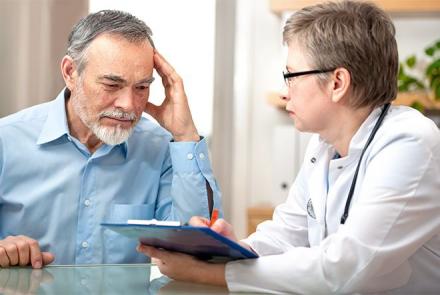Breast cancer is the commonest cancer of urban Indian women and surgery is often an important step in treating breast cancer. In an interview, Dr. Rucha Kaushik, Consultant Breast Cancer Surgeon, Hinduja Hospital, answers your unanswered questions about breast cancer surgery procedures, options and challenges.
A biopsy is typically done to diagnose breast cancer. Are there different types of biopsies?
Yes, there are different types of biopsies done to diagnose breast cancer. Most commonly used…
Latest Stories
- Jayshree Guru was diagnosed with breast cancer, but she decided to be strong to face the treatment, for her own sake as well as for her family. Having dealt with cancer, she was not prepared when Lymphoedema set in. With help and assistance from Lakshmi Pain and Palliative Care, Jayshree learnt to treat lymphoedema. I was diagnosed with breast cancer at 48yrs. It was tough, and I did not think much about it at that time. One thing I decided - that I will not become weak and feel…
- Lymphoedema can be caused by cancer, surgery of any kind, radiotherapy or even infection and can result in swelling, pain and discomfort. Dr. Subathra Muthukumaran of Lakshmi Pain and Palliative Care Trust shares how it can be managed by simple exercises and what to avoid in such a situation. The goal of palliative care is to relieve symptoms and improve quality of life of those with chronic illnesses since people go through not just pain but various other symptoms. One such distressing symptom…
- Workplace can create its own pressures on a person to develop long-term mental health issues. A look by clinical psychologist Smriti Sawhney at how certain issues ought to be tackled in one’s professional space. “INDORE, India — Leaving his wife and two young children home on a recent Sunday, a 27-year-old salesman of a pharma company in India — in fact, one of the American health care company’s top performers there — rode his motorcycle to a remote railroad track and died by suicide. In his…
- The psychological impact of premature menopause can range from anxiety and insomnia to low self-esteem and conflict in interpersonal relationships. Dr. Madanki Srinivasan, gynecologist/obstetrician and now mental health counsellor, tells us how to make the journey smooth. What are the main reasons for early or premature menopause? The causes for early or premature menopause would be premature ovarian failure, genetic, surgical, or drug-induced as in by chemotherapy and radiation during…
- Out-of-hospital cardiac arrest (OHCA) is one of the leading causes of death and disability worldwide. Quick and fast intervention helps. Dr. Shital Patel recommends first aid tips for cardiac arrest. Sudden cardiac arrest occurs when the heart stops beating suddenly commonly due to some electrical malfunction. The victim becomes unresponsive, unconscious with no signs of breathing or movement. Death can occur within minutes as blood stops flowing to the lungs, brain and other…
- Dr. Sapan C. Pandya, MD DM Clinical Immunology & Rheumatology answers this and many other questions in this exhaustive talk with Kirtida Oza, Co-founder of Sjögren’s India. This online Webinar on “Rheumatic Diseases: Challenges and Hope” is aimed at enhancing awareness about lesser understood diseases. #Rheumatic Diseases Awareness Month Dr. Sapan C. Pandya starts with a quick recap of lesser known Rheumatic Diseases including Scleroderma, Lupus, Inflammatory Myositis and…
- Saadiya Hurzuk is a Centre Manager and Clinical Psychologist at ARDSI Hyderabad. She shares her views on why it is important to have an early diagnosis in dementia treatment. Over a period of time dementia has become one of the frightening epidemics in the global health scenario. With social stigma attached to the disorder, it is kept hidden. People find it difficult to accept and understand the problems they are facing with memory and cognition that is affecting them daily. Most of the time…
- Neha Sinha, a clinical psychologist by profession talks about how emotional connect is very important for people with dementia. Even if they have loss of actual memory, they remain receptive to emotions as well as to the body language of people around them. Each individual is unique and so are his or her experiences, memories and feelings. There is a general apathy towards dementia especially when it comes to remembering the person they are, the rich history they hold. People with dementia…















